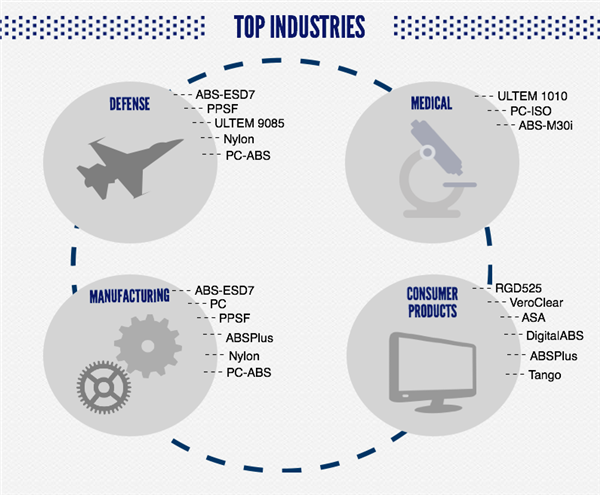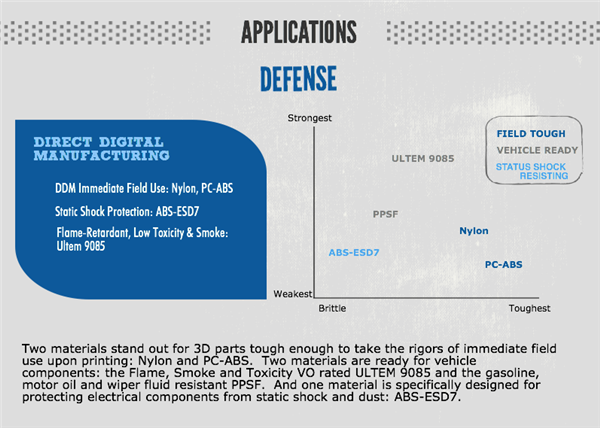Beijing 3D printer report: Many consumer-grade 3D printing companies often list a wide range of materials when introducing their products, but rarely go into detail about the specific properties of these materials. This lack of information can leave users unsure which material is best suited for their particular application.
For many users, the need for flexibility, bendability, or durability is essential. In short, every 3D printing project has unique requirements, and choosing the right material can make a big difference in performance and outcome.
To help users find the most suitable material for their needs, CAPINC—a provider of 3D design solutions and an authorized distributor of SolidWorks and Stratasys products—has created an infographic that outlines the best materials for different 3D printing applications.

CAPINC also explains the distinction between "strength" and "toughness" in various 3D printing materials. For example, a hammer made from tempered glass may be stronger than one made from 3003 aluminum, but it cannot withstand repeated use like the softer aluminum version. This highlights the importance of understanding material characteristics beyond just strength.

"Some materials are 'high-strength' but not necessarily 'tough,' while others are 'tough' but not always 'strong,'" said CAPINC. "That’s why we don’t have glass hammers or high carbon steel tools—each material has its own strengths and limitations."

In addition, the melting temperature of filaments used in FDM (Fused Deposition Modeling) 3D printers can significantly impact their performance. Some materials may warp under high heat or become less durable, while those with higher melting points, such as nickel or ceramics, are better suited for more demanding environments.

A practical example of proper material selection is in the medical field. Medical devices must often be sterilized, including through high-temperature steam, so 3D-printed medical tools need to be made from materials that can withstand such conditions. Additionally, some components may require special considerations, such as compatibility with MRI scans or sensitivity to static electricity, like when working with circuit boards.

So how do you determine which filament is best for your project? Whether you're in electronics, military, consumer goods, or just an enthusiast, CAPINC’s free infographics provide a helpful guide to understanding the ideal balance of strength, toughness, precision, and temperature resistance for each material. (Beijing 3D Printer Report)
LV Series(23.8"-98")
infrared touch screen,ir frame touch screen,multi point touch screen,infrared touch screen overlay
Guangdong ZhiPing Touch Technology Co., Ltd. , https://www.zhipingtouch.com